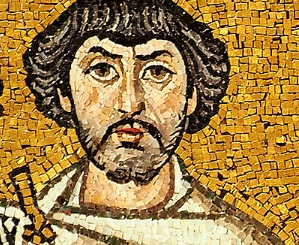Byzantine Empire: Major facts about one of history’s longest-running empires
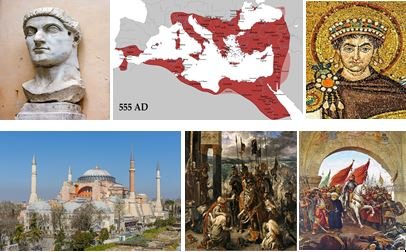
Byzantine Empire facts
The Byzantine Empire, also known as the Eastern Roman Empire, is most famous for being one of the most resilient empires the world has ever seen. With its capital at Constantinople (modern-day Istanbul, Turkey), the empire kept going for close to thousand years after the demise of its western counterpart – the Roman Empire – in 476 AD.
Despite facing enormous challenges, the Byzantine emperors managed to keep their sphere of control in the region relatively intact until their cherished capital Constantinople fell to the Ottoman Turks in 1453.
At the height of its power, the Byzantine Empire was considered one of the greatest, stretching as far as Western Europe.
Unbeknownst to many people, the empire’s inhabitants did not refer to themselves as Byzantines; instead they called themselves Romans. That is quite interesting considering the fact that the dominant language in the empire was Greek.
Who were the Byzantines and just how much of an influence did they have in the region? Here are 14 very interesting facts about the Byzantine Empire:
The Byzantine Empire was one of the longest-running empires
In 312 AD, Constantine the Great (Constantine I) rose to power after securing a resounding win at the Battle of the Milvian Bridge. Constantine is believed to have laid the first bricks of the Byzantine Empire, establishing the Empire’s famous capital, Constantinople.
After the death of Constantine, the Empire would witness numerous emperors, from the late antiquity down to the early renaissance era, when the Empire finally fell to the might of the Ottoman Turks. What this means is that the Byzantine Empire lasted for more than a millennium, making it one of the longest-running empires in history.
Did you know: Constantine the Great was the first Roman emperor to convert to Christianity?
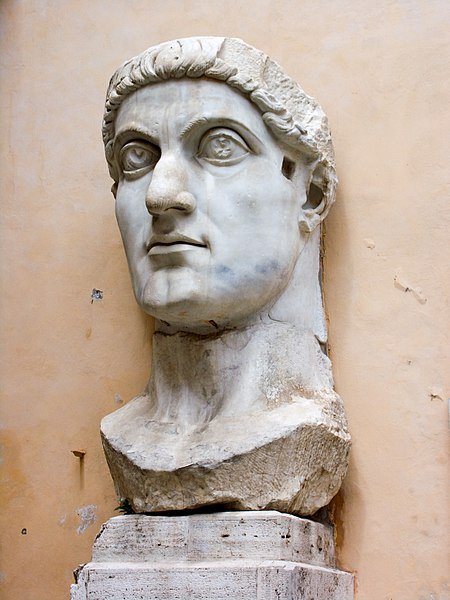
Byzantine Empire facts | Statue of Constantine the Great
The inhabitants of the Empire did not call themselves Byzantines
During the reigns of Constantine and his immediate successors, the Roman Empire was unified Empire stretching across the Mediterranean. Following the death of Theodosius I in 395 A.D., the empire fractured into two – the Western Roman Empire and the Eastern Roman Empire. It was the Eastern Roman Empire that thrived and became the Byzantine Empire.
The name “Byzantine” was not giving to the Empire and its inhabitants until the 16th century, when a German writer by the name of Hieronymus Wolf authored the book “Corpus Historiae Byzantinae”. During the Byzantine Empire era, the inhabitants saw themselves as Romans. In some cases, they called themselves Romania. And the Empire itself was called the Roman Empire. The name “Byzantine” perhaps came to stick because it helped scholars easily distinguish the Western Roman Empire (i.e. Rome) from the Eastern Roman Empire (i.e. the Byzantines).
Read More: Constantine the Great – Biography and Notable Accomplishments
The Empire’s famous capital, Constantinople, was built by Constantine the Great
The founder of the Byzantine Empire, Constantine the Great, was also the one who founded the city of Constantinople. After rising to power in Rome, Constantine decided to move the power hub from Rome eastward. He established the capital at the site of the ancient city of Byzantium and then named the city after himself.
Geographically, the city is located at the European side of the Bosporus Strait; it separates Balkan Europe from Asia’s Anatolian Peninsula. As a result those factors, as well as the immense works of Constantine and his successors, Constantinople became one of the greatest cities, if not the greatest, at the time.
Did you know: The 5th-century writer Sozomen claimed that the city of Constantinople was inspired by a divine force of God?
Emperor Justinian I is credited with the golden age of the Byzantines

Byzantine Empire facts | Emperor Justinian I, also known as Justinian the Great – Detail of a contemporary portrait mosaic in the Basilica of San Vitale, Ravenna, Italy
To show just how instrumental the Byzantine Emperor Justinian I was in the Empire’s growth, one need look no further than to the famous Hagia Sophia.
Justinian I, who came to power in 527, is credited with building the magnificent cathedral that still stands today in modern-day Turkey. The cathedral was not the only feat he accomplished. Interestingly, Justinian’s reign was not the smoothest of reigns. In his first few years on the throne, he had to quickly quell the Nika riots, which almost toppled him.
To celebrate his triumph over the rioters and sneaky conspirators that wished ill for him, Justinian set out to put up magnificent buildings all across Constantinople. By so doing, the emperor ushered in the golden age of the Byzantines, encouraging the growth of arts, philosophy, sciences, architecture and other disciplines. The empire was also significantly expanded by Justinian, stretching into areas in Italy, North Africa and other parts of the Mediterranean.
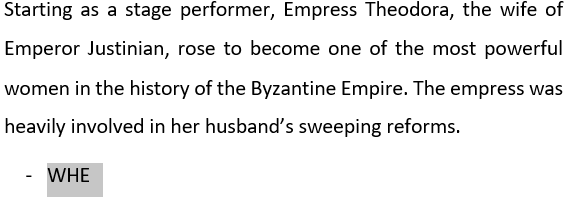
Often hailed as one of the most influential women in the history of the Byzantine Empire, Byzantine Empress Theodora was a devoted wife of Justinian the Great
The West loathed the Byzantines

Byzantine Empire facts | Western and Eastern Roman Empires
Ever since the Roman Empire split in later part of the 4th century, the Western half (i.e. Rome) became increasingly hostile towards the Byzantine Empire. Scholars and historians in the West described the East and their Greek Orthodox culture as uncouth.
The West also believed that the Orthodox Greek Eastern Romans practiced the wrong kind of religion; hence they were not real Romans. This notion perpetuated long after the decline of Byzantine Empire. For example, Edward Gibbon – an 18th century author – described them in his book, The Decline and Fall of the Roman Empire, as vile people and completely opposite to the Romans.
It was also not uncommon for the Eastern Roman Empire to be tagged as cowards and incompetent people, with many Middle Ages writers wrongfully claiming that the empire chalked very little cultural achievements.
Read More: 10 Greatest Roman Emperors of All Time
The Hagia Sophia is generally seen as the Empire’s most prized jewel
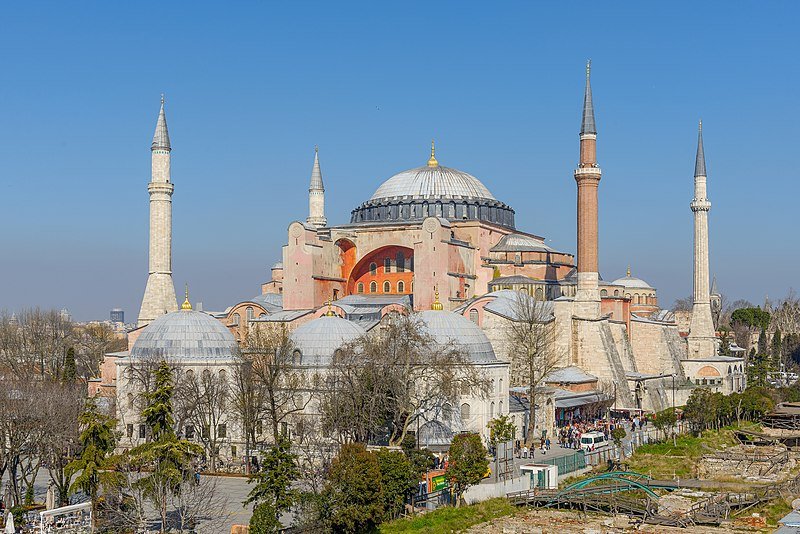
Byzantine Empire facts | The famous Hagia Sophia in the district of Fatih, Istanbul, Turkey
After Byzantine Emperor Justinian I completed construction of Hagia Sophia cathedral, he is believed to have said that “Soloman, I have outdone thee”. The magnificent cathedral, which was built on the site of the ruins of an old church, was at the time none like anything seen before. The height of the Hagia Sophia is about 270 feet (82 meters) while the diameter of its dome reaches 108 feet (33 meters).
Did you know: The name “Hagia Sophia” translates to “Holy Wisdom”?
Very resilient empire
In spite of all the ridicule and disdain that were aimed toward the Byzantines from Rome, the Byzantine Empire was indeed a very formidable empire, leaving an indelible mark on the world. For example, a great deal of Western culture was shaped by their intellectual achievements, in terms of legal codes, art and literature. For an empire that lasted for more than a millennium, certainly they must have done some things right that made them resilient all those years.
As a matter of fact, had it not been for the Byzantine Empire, the entire of Western and some parts of Central Europe might have fallen to the growing might of the Islamic Caliph. After Rome’s collapse in 476, the fractured and weak smaller states would have proved to be a mismatch for the very powerful and rich Islamic Caliph that was on the rise from the 7th century onward. By warring against the Caliph, the Byzantines shielded Europe from the Arab conquests. Take away the Byzantines from that era and history as we know it today would have been completely different.
Constantinople was a heavily fortified and vibrant city
Owing to its geographic location, the city of Constantinople proved a tough nut to crack for invaders. And although the city endured many frequent attacks, the walls built around the city made it impregnable. This fact was just one of the reasons why the Empire lasted for the duration that it did.
The city’s location gave it a huge advantage, as the city’s navy was able to quell any would-be invaders at sea. The likes of the Avars, Persians, Arabs, Slavs, Vikings, Bulgars, and Rus all tried to break into the city at some point; however, they all found it extremely difficult.
Constantinople’s position right in between two continents made it benefit tremendously from the commerce. The city served as hub, linking different major sea trade routes along the Mediterranean.
The major problem the city had to contend with was betrayals and insurrections that stemmed from within. However, that all changed in time with enemies of the Byzantines acquiring gunpowder. Such a weapon could easily breach the city’s walls, as was seen in 1453.
What are the Byzantine Empire’s Most Important Accomplishments?
Did you know: Up until the Fourth Crusade in 1204, Constantinople was regarded as the richest and biggest city in Europe?
The Nika Riots of 532 AD
Even though his reign was one of splendid accomplishments, Emperor Justinian I had to contend with a ferocious urban rebellion in the city. The genesis of the riots can be traced to a few rowdy racetrack supporters voicing their resentment against the Emperor’s “blue” racing team. The agitations moved from sports centers to the streets, where rioters, conniving with influential members of the city, tried to force Justinian I to abdicate.
The riots claimed thousands of lives in the city, as Justinian tried to quell it using all the means available.
Justinian Pandemic (541/542 A.D.)
Just as Emperor Justinian had secured a firm grip on the Empire, a plague brought pain and death to the homes of the Byzantines in in 541/542 AD. The Justinian’s Plague, as it is called, was the first recorded pandemic in history. No one was sparred, even Justinian himself was infected, however, the emperor pulled through. Reasoned to have originated from an area close to the Tian Shan Mountains in Central Asia, the Justinian Plague moved along trade routes, infecting two additional continents – Africa and Europe.
The plague, which was caused by Yersinia pestis bacterium, was transported by flea-infested black rats. Majority of the people (25 to 100 million) that lost their lives from the bubonic plague came from the urban areas. In Constantinople alone, it has been estimated that close to one-third of its population perished from the plague.
Did you know: The Justinian Plague ushered in the feudal age, as power moved from the urban centers to the countryside?
Decline of the Byzantine Empire
Following the death of one of the Empire’s greatest rulers – Justinian I – the Empire was plunged into what many historians like to refer to as the Dark Age of the Byzantine Empire. The empire lost a lot of its territories in all directions.
In the east, the Byzantines had to contend with the rising Arab tribal armies. In 634 for example, the Arabs attacked both the Sassanid Persian Empire and the Byzantine Empire. Although the Byzantine Empire didn’t crumble like the Sassanid Empire, it did lose tremendous amounts of territory, including places in Syria, Egypt, and North Africa.
In the west, the empire lost its Italian territories to the Lombards; the Frankish people took control of Gaul and some coastal areas in Spain around the seventh century.
In just a couple of centuries, the Byzantine Empire had shrunk in size, predominantly controlling the Anatolia regions (modern-day Turkey).
Did you know: Some religious fanatics blamed the Church’s use of graven images for the loss of territories in the Middle East and Africa?
The 9th and 10th century revival
Starting around the 9th century, the Byzantine Empire witnessed considerable amounts of progress. Although that growth never reached the ones seen during its golden age, the Byzantines were able to reclaim some amounts of the territory it had lost to the Arabs in the seventh century.
Their cultural and military growth was also buoyed by the fact that the Arab Abbasid Caliphate was on the decline. The emperor who spearheaded this revival was Emperor Basil II (959 – 1026).
Muslim Turks and nomads invasions
Just as the empire was attaining some level of stability and prosperity, the Muslim Turks burst on to the scene and become a powerful player in the region starting around the 10th century. Majority of the threat to the empire came from the Seljuk Empire, who had secured immense success in Muslim Middle East, Persia, Mesopotamia and Syria.
In 1071, Seljuk forces defeated the Byzantine army at the Battle of Manzikert. The defeat opened the door wide open to more defeats, as the all frontiers of the empire got breached. The Seljuk forces were able to establish Turkic culture and identity in the territories won from the Byzantines.
The Seljuk nomads were different kinds of nomads from the Huns, Avars and Mongols. They were able to transition from nomadic lifestyle to a full-blown empire occupied by urban dwellers. They promoted scholarship and construction projects in their territories. By so doing, they laid the right foundation for the Ottoman Empire – an empire that would deliver the final crushing blow to the Byzantine Empire.

Byzantine Empire facts | The Entry of the Crusaders into Constantinople, by Eugène Delacroix (1840)
The demise of the Byzantine Empire at the hands of the Ottoman Turks
Weakened by the Fourth Crusade in 1204, the Byzantine Empire was there for the taking by any organized and powerful empire.
As the Byzantines were licking their wounds from the misery inflicted on them by the army of crusaders from the West, a number of tribal Turks from the Steppe were busily raiding the lands of the Seljuk Turks.
“Ghazis” – a religious order of soldiers, thieves, and depressed vagabonds – committed themselves to fighting what they saw as the “infidels” – the Byzantine Empire. By the 14th century, the Ghazi Chieftain – Osman I – had successfully established the first Ottoman dynasty. Osman I’s son – Orhan – secured huge battle wins in north-western Anatolian region before making Bursa the capital of the Ottoman state in 1326. With winds in their sail, the Ottomans proceeded to take the Gallipoli Peninsula and Thessaloniki in Greece. After defeated the Serbs at the Battle of Kosovo, the Ottomans became the dominant power in the Balkans.
Finally, the Ottomans turned its attention to region’s most prized city – Constantinople. The fall of Constantinople occurred on 29 May 1453 after a 53-day siege by Ottoman forces under the command of Sultan Mehmed II (also known as Mehmed the Conqueror). With the fall of Constantinople came the end of the Byzantine Empire.

Constantine XI Palaiologos and the Fall of Constantinople
Who was the Last Byzantine Emperor?
Known as the last Byzantine Emperor, Emperor Constantine XI Palaiologos (1405-1453) died defending the city of Constantinople against the invading Turkish Ottoman forces of more than 75,000. The Ottoman Empire were led by Sultan Mehmed II (also known as Mehmed the Conqueror).
According to established accounts of the Siege of Constantinople, the Byzantine emperor took off his imperial gown and then charged alongside his forces into the fray. He fought to the bitter end on May 29, 1453. His death brought to an end the Eastern Roman Empire, which traced its origin to around 330, when Constantine the Great founded the city of Constantinople as the capital of the Roman Empire. Constantine XI thus became the last Christian ruler of the Constantinople.

Byzantine Empire facts | Ottoman Sultan Mehmed II (Mehmed the Conqueror) makes his triumphant entry into Constantinople| Painting by Fausto Zonaro (1854–1929)


